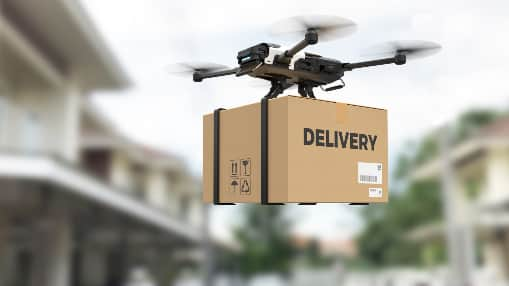Despite current challenges, drone delivery aligns perfectly with DTDC’s strategy of driving digital innovation, sustainability, and customer-centric logistics.

Aneel Gambhir, CFO, DTDC Express (Source: individual)
On July 29, 2024, DTDC launched its first drone delivery service in collaboration with Skye Air Mobility, a drone logistics solution provider firm transporting a parcel from Bilaspur (Haryana) to Gurugram Sector 29. According to the company, drone deliveries can save up to 520 grams of CO₂ emissions per shipment compared to traditional methods.
As India’s logistics sector accelerates its digital and green transition, DTDC Express is positioning itself as an early mover in drone-based deliveries. However, full-scale deployment may still be a few years away, due to regulatory uncertainty, infrastructure gaps, and evolving drone technology.
“While there isn’t a fixed capital allocation yet, we are closely monitoring the space. This isn’t just about faster delivery—it’s about building a long-term, sustainable logistics solution. And when the time is right, we’re prepared to invest significantly," Aneel Gambhir, CFO at Indian courier delivery and logistics firm, DTDC Express, says.
He notes that while regulatory permissions have improved, the lack of a stable, predictable framework continues to be a bottleneck. Events such as geopolitical tensions, VIP movements, and natural disasters often lead to temporary no-fly zones, impacting drone operations and logistics planning.
The company is currently focusing on critical use cases, particularly medical and emergency deliveries, with plans to gradually scale as regulatory clarity and drone capabilities improve.
Two core challenges: Regulatory & Drone Tech
DTDC highlights two primary challenges delaying a complete drone delivery rollout. “First is the evolving regulatory environment, especially permissions from authorities like the DGCA, which governs drone operations,” says Gambhir. “Second is the technological maturity of drones. Most commercial drones today are limited to carrying small payloads. For drone delivery to be economically viable at scale, we need progress in payload capacity and the ability to operate multiple deliveries from a single control system.”
Gambhir says that consistency and reliability are essential to express logistics, which operates on fixed schedules and networked routes. “You can’t have drones flying one day and grounded the next due to sudden restrictions. That disrupts service quality.”
India currently allows BVLOS (Beyond Visual Line of Sight) (the pilot deliveries done by companies like DTDC are BVLOS) that operate only through case-by-case approvals, prompting drone firms to push for streamlined rules. While a National UTM (Unmanned Traffic Management) Policy Framework exists since 2021, full-scale UTM integration with existing air traffic systems is still in progress. Also, while Drone Rules 2021 allow drones up to 500 kg, commercial use beyond 25 kg still requires individual DGCA certification. No major regulatory updates have been made in 2025 yet.

Commercial Viability Still Evolving
Despite the strong potential, DTDC remains cautious about making large-scale investments in drone logistics. Gambhir believes the commercial case is not yet fully proven, and ROI will depend on variables such as frequency of drone usage, operational time windows, regulatory approval cycles and drone durability and cost efficiency.
For now, drone operations are categorized as strategic investments, with DTDC waiting for the right moment to scale. The company believes that when technology, regulation, and ROI align, the shift to drones could be both rapid and transformative.
“The market potential for drone-based delivery will largely depend on the commercial proposition. If drones can offer a viable alternative—at a cost that's equal to or only slightly higher than traditional delivery methods—the adoption will be much faster. In some cases, it could even begin to replace conventional logistics for certain use cases,” he says.
Gambhir also points out that larger payload drones (50–100 kg) are now entering the market, which could significantly improve the unit economics of drone logistics. However, he cautioned that full automation is not yet feasible, especially given the lack of infrastructure like dedicated drone ports for landing and loading.
“We still need human support at the last mile,” he says, referencing the Bilaspur pilot, where a person had to collect the parcel from the drone and deliver it manually.
DTDC sees an opportunity for public-private partnerships or community-led initiatives to create drone-friendly infrastructure, such as designated drone zones in campuses, gated societies, or logistics hubs.
Currently, most commercial players operate under DGCA-approved trials for drones weighing up to 25 kg. Drones with higher payload capacities (50–100+ kg) are being tested under sandbox models and MoCA-led collaborations, but widespread approval is still in progress.
Drone delivery fits squarely into DTDC’s broader strategy focused on digital innovation, sustainability, and customer-centric logistics. The company believes drones will be instrumental in reducing carbon emissions and increasing reach, especially for high-frequency, low-volume deliveries.
He concluded, “This isn’t just about faster delivery—it’s about building a sustainable, future-ready logistics model aligned with India’s net-zero goals.”
By continuing you agree to our Privacy Policy & Terms & Conditions
